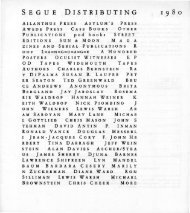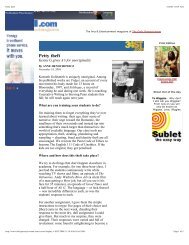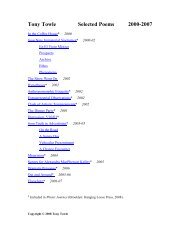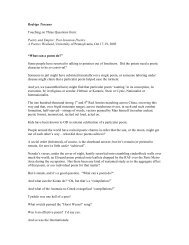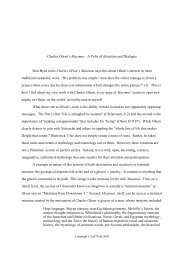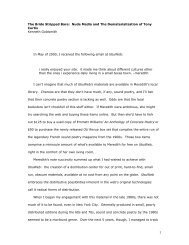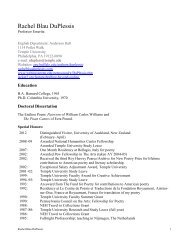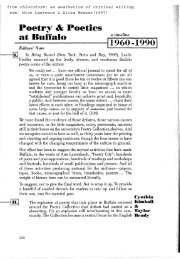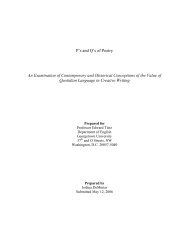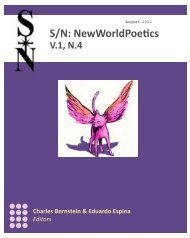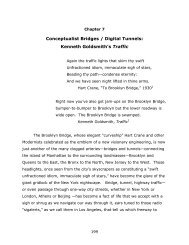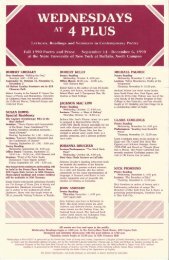Preface - Electronic Poetry Center
Preface - Electronic Poetry Center
Preface - Electronic Poetry Center
Create successful ePaper yourself
Turn your PDF publications into a flip-book with our unique Google optimized e-Paper software.
From: Don Byrd<br />
Subject: Experiments<br />
Dear Charles–<br />
I suppose you in part posted the list of experiments as an homage to Bernadette,<br />
and of course I wish her well.… And it is also a tribute to Tzara, Cage, and<br />
Mac Low, all of whom I would likewise honor.<br />
Although, as you know, I sometimes–perhaps often–do not agree with you, I<br />
take your work very seriously. I find most of your moves in relation to the art<br />
generative–decisively so. And I have attempted to understand why you<br />
introduce these "experiments" in the context of your of your proposal of poetry<br />
as experimentation.<br />
The use of that kind of experiment, when it was of use, was to rend the placid,<br />
rational surface of smug and placid rationalism. There was a powerful, even<br />
controlling assurance, that the world made sense. One half of Modernism was<br />
commitment to the revelation of precisely that sense– Yeats, Pound, Joyce,<br />
Shoenberg, Anglo-American philosophy from Russell and Wittgenstein to<br />
Quine and the Cognitive Scientists. It is sadly reduced but the drivel that comes<br />
from most Creative Writing programs to this day still basks in that now grim<br />
assurance that because I saw a blue jay on a maple branch take a shit, it most<br />
have some true and important connection to my thought of mortality.<br />
The irruption of the irrational and its disruption of that smug sense of the<br />
world–whether from the Dadaist/surrealist algorithms of non-sense or from the<br />
failure to make it cohere by the like of Pound–was immensely satisfying and, of<br />
course, immensely productive.<br />
The mode of production that had proven so successful in art was adapted in the<br />
1950’s also to commercial production. The rational machine of the capitalist<br />
economy began exploiting its own material unconscious, thus, fueling<br />
unparalleled economic growth. The surface of the earth was increasingly<br />
covered with the chaotic residue of riotous production: the production of art,<br />
the production of consumer goods, the production of by-products that polluted<br />
the environment, the production of what Smithson called "the slurbs"–"a<br />
circular gulf between city and country–a place where buildings seem to sink<br />
away from one’s visionP buildings fall back into sprawling babels or limbos.



